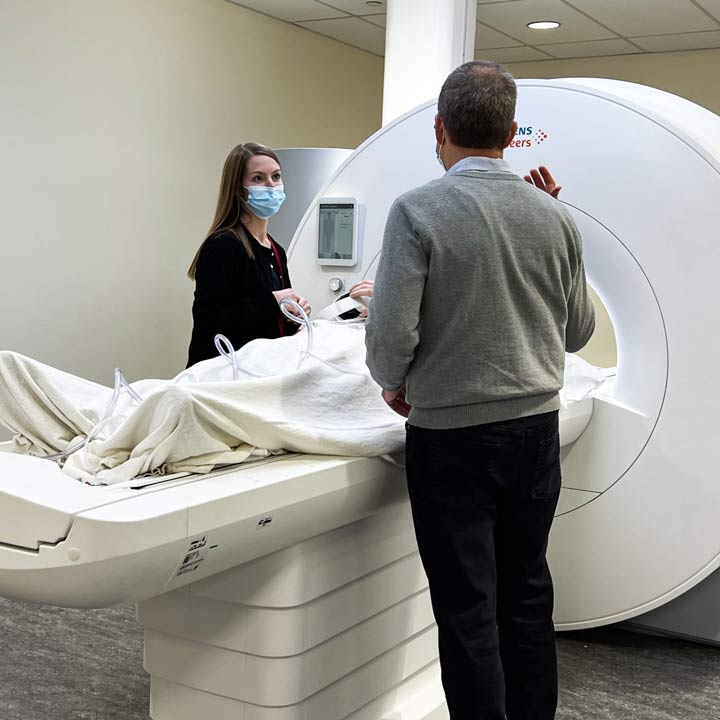
Robotic-assisted surgery with intraoperative radiation offers new hope to patients with local cancer recurrence
 The Ohio State University College of Medicine is collaborating with an industry partner in a phase I study funded by an NIH/R44 grant. The focus of the research is to develop an MRI technique to help better identify clinically significant forms of prostate cancer.
The Ohio State University College of Medicine is collaborating with an industry partner in a phase I study funded by an NIH/R44 grant. The focus of the research is to develop an MRI technique to help better identify clinically significant forms of prostate cancer.
Shawn Dason, MD, one of the co-investigators for Ohio State, is a urologic oncologist and a clinical assistant professor in the Department of Urology in the Ohio State College of Medicine.
“Prostate cancer is the most common cancer in men, and we generally screen for it with a PSA blood test,” Dr. Dason says. “The problem is that PSA alone is not a fully accurate screening test.”
Simply measuring a patient’s PSA (prostate-specific antigen) doesn’t provide a complete diagnostic picture. Although PSA does tend to correlate with prostate cancer risk, there are a number of factors other than cancer that may affect PSA levels.
For example, PSA levels tend to rise naturally as men age, but there are also health conditions such as benign prostatic hyperplasia and prostatitis that can raise PSA levels. Men can also harbor clinically significant prostate cancer with relatively low PSAs.
Typically, a patient with a high PSA would be scheduled for a biopsy. However, biopsies are costly and can also carry significant health risks.
“Hundreds of thousands of prostate biopsies are done in the U.S. every year with a 2-4% rate of serious infection,” Dr. Dason says.
Moreover, almost half the men diagnosed with prostate cancer aren’t considered to have “clinically significant” cases. This means they’ll likely never experience symptoms, disease spread or death from their cancer. In other words, were it not for the biopsy, they wouldn’t have otherwise been impacted by their cancer. Finding these cancers that aren’t clinically significant with PSA screening is termed “overdiagnosis.” This overdiagnosis can create anxiety and may cause men to seek treatment they don’t need, which puts them at risk of complications without seeing any benefit.
Because of these risks and expenses, the U.S. Preventive Services Task Force made these recommendations about prostate cancer screening:
A prostate MRI provides an additional level of noninvasive diagnostic testing prior to getting a biopsy. Radiologists interpret the data and score patients on a five-point scale. Men who score a three or higher would typically get a biopsy.
An MRI can help reduce the number of overall biopsies as well as the risks from overdiagnosis, but it also has limitations.
“An MRI scan can detect 90% of prostate cancers, but it still only provides a grayscale or a probability of cancer,” Dr. Dason says.
The biomedical company that Ohio State is partnering with is developing a technique to improve the accuracy of MRI scans. The two-year NIH grant will help them begin testing the feasibility, safety and potential effectiveness of this innovation.
Dr. Dason is optimistic. “Our hypothesis is that this new technique will help us detect more prostate cancers and more accurately characterize suspicious MRI lesions, thereby reducing the risks of unnecessary biopsies and overdiagnosis.”